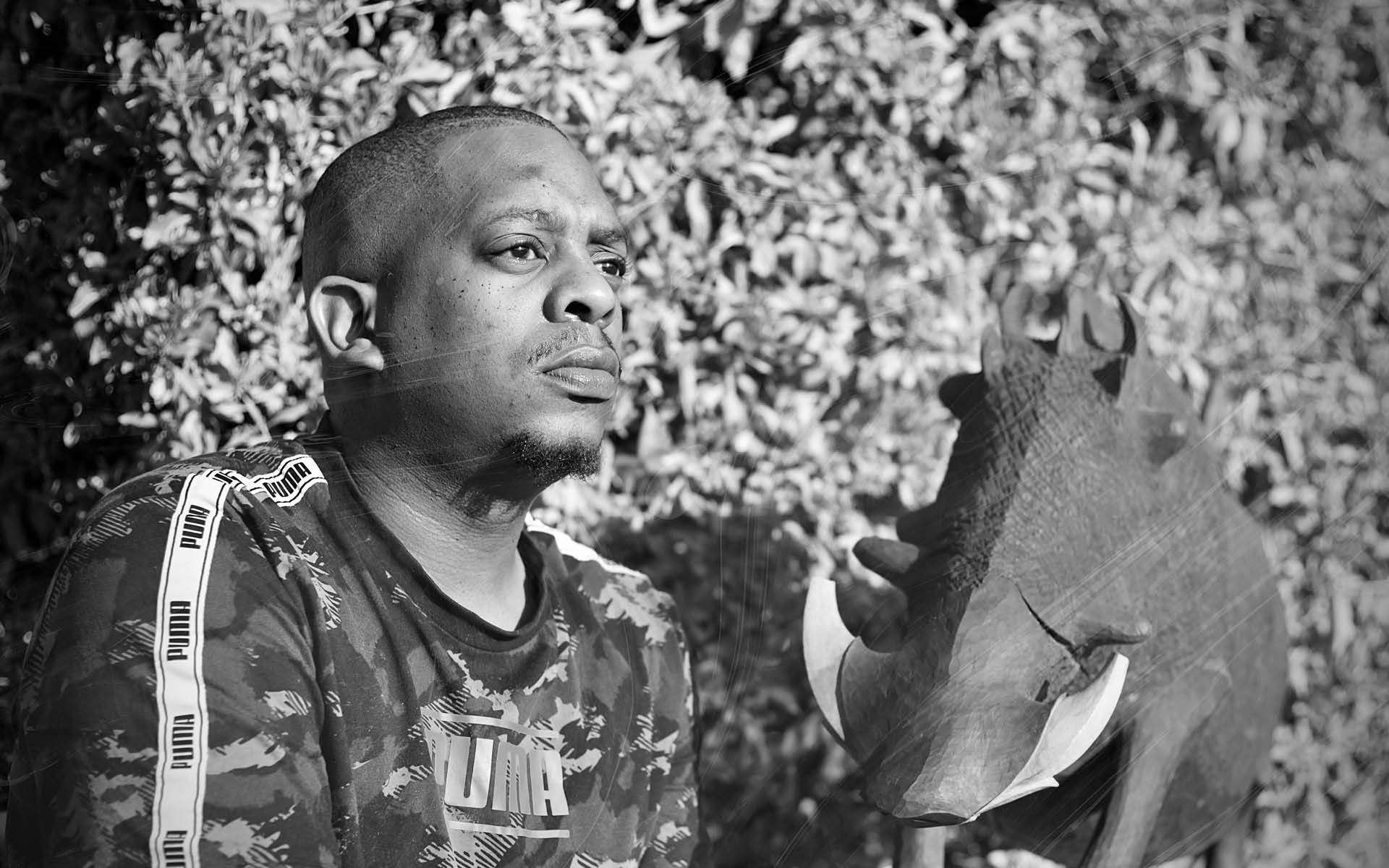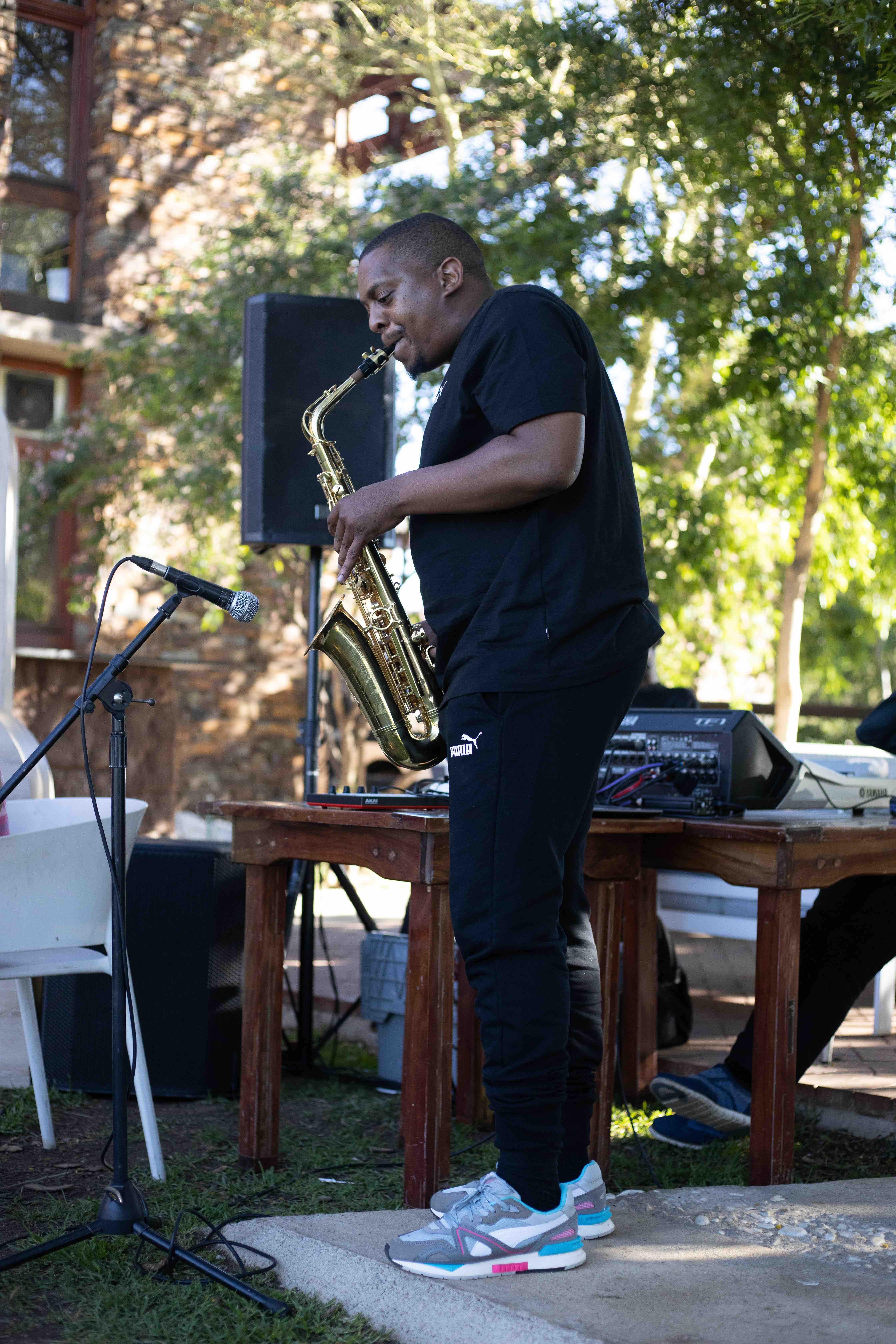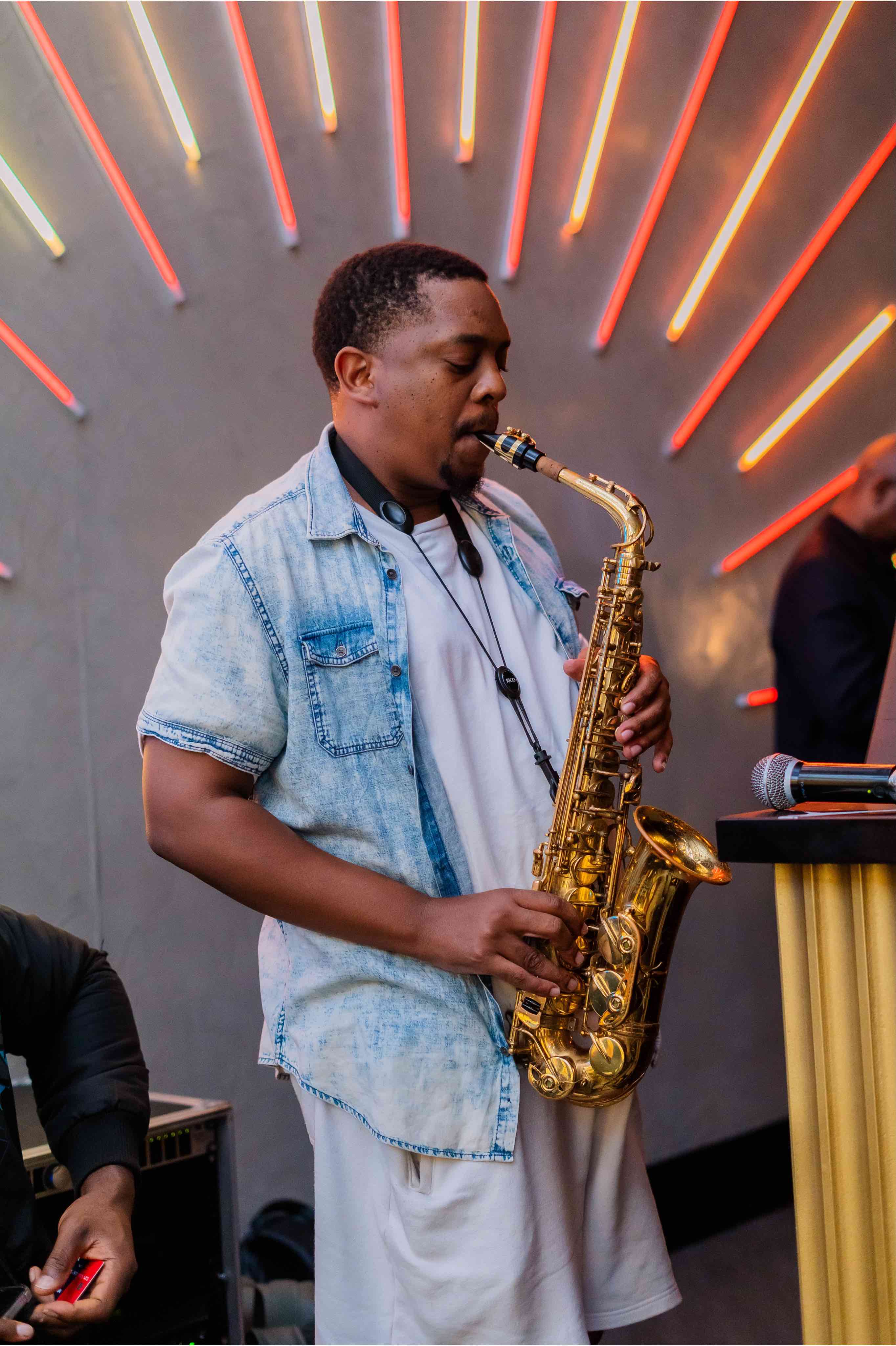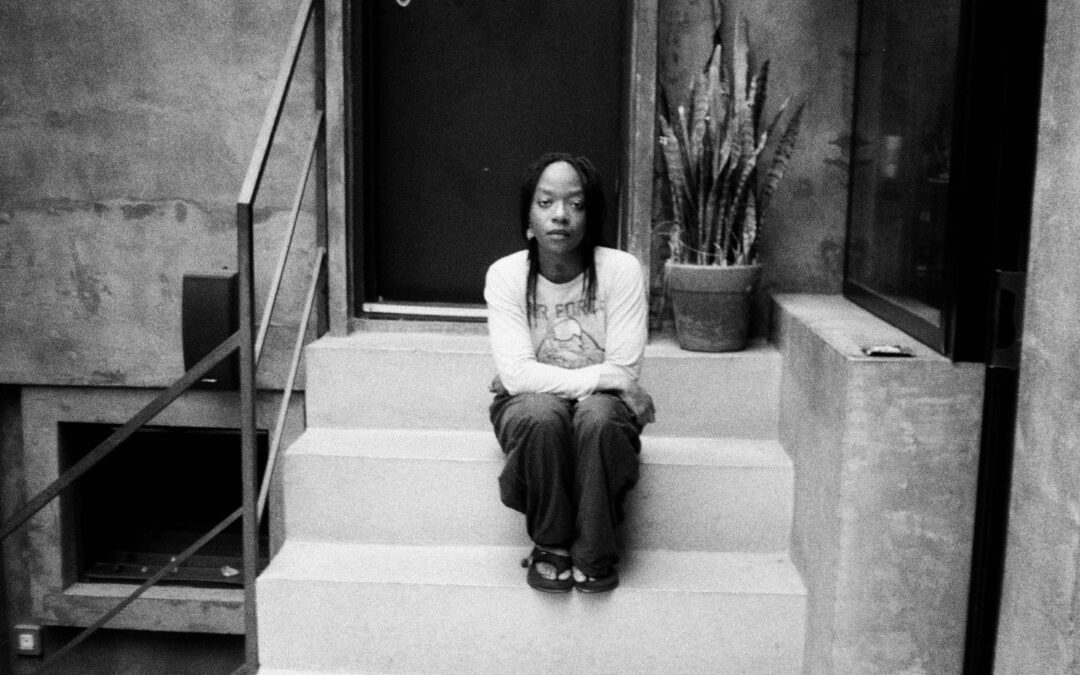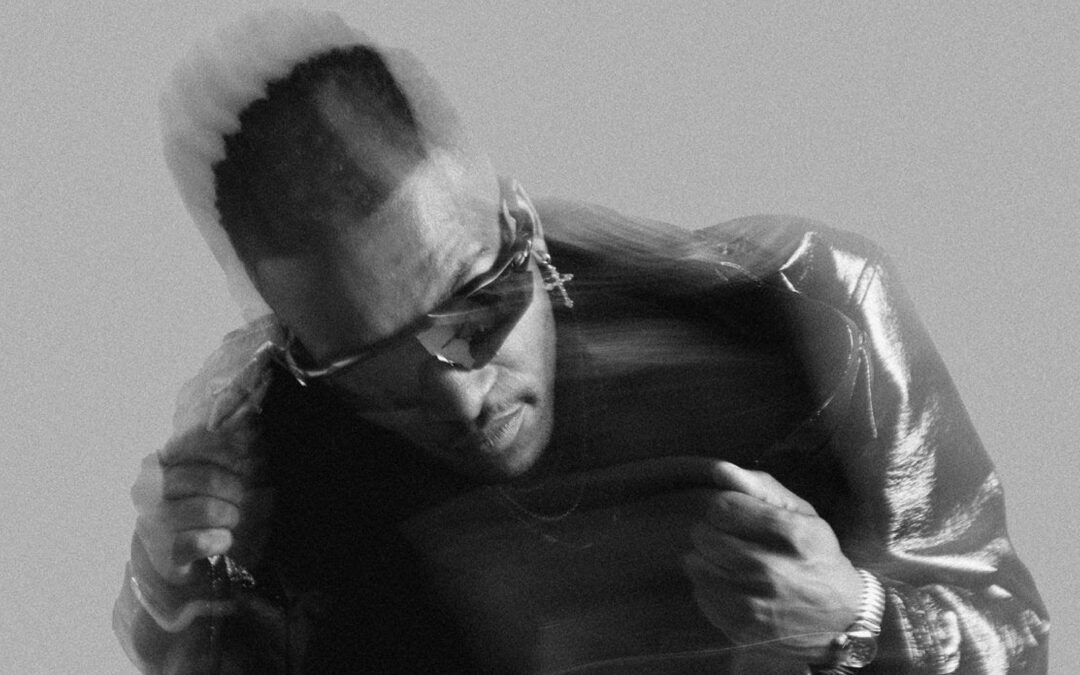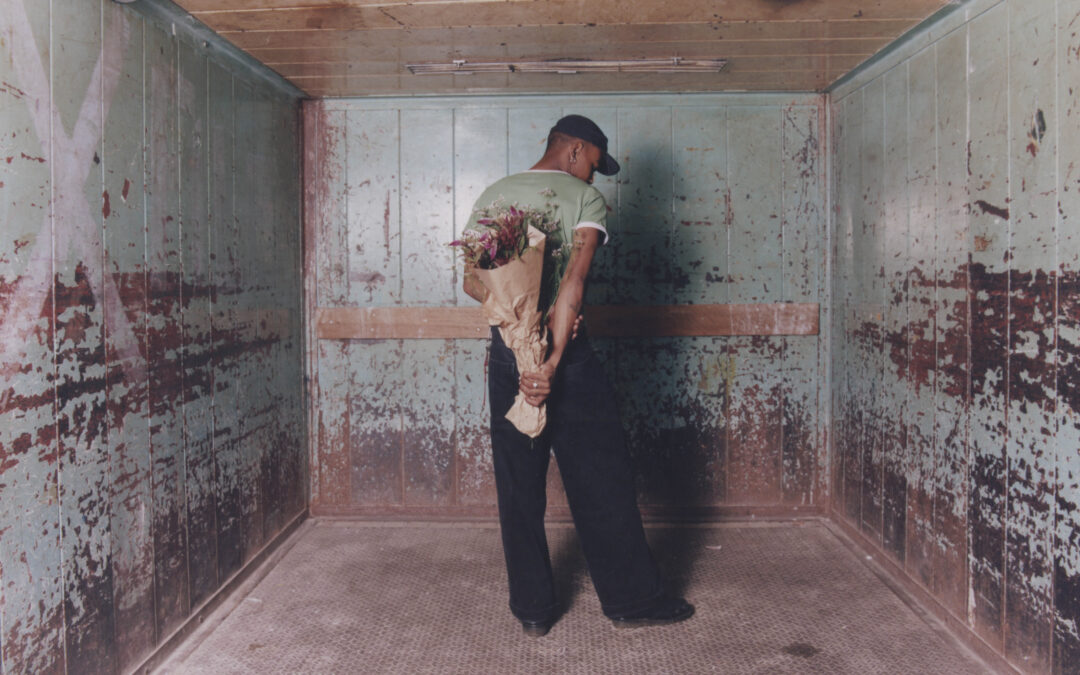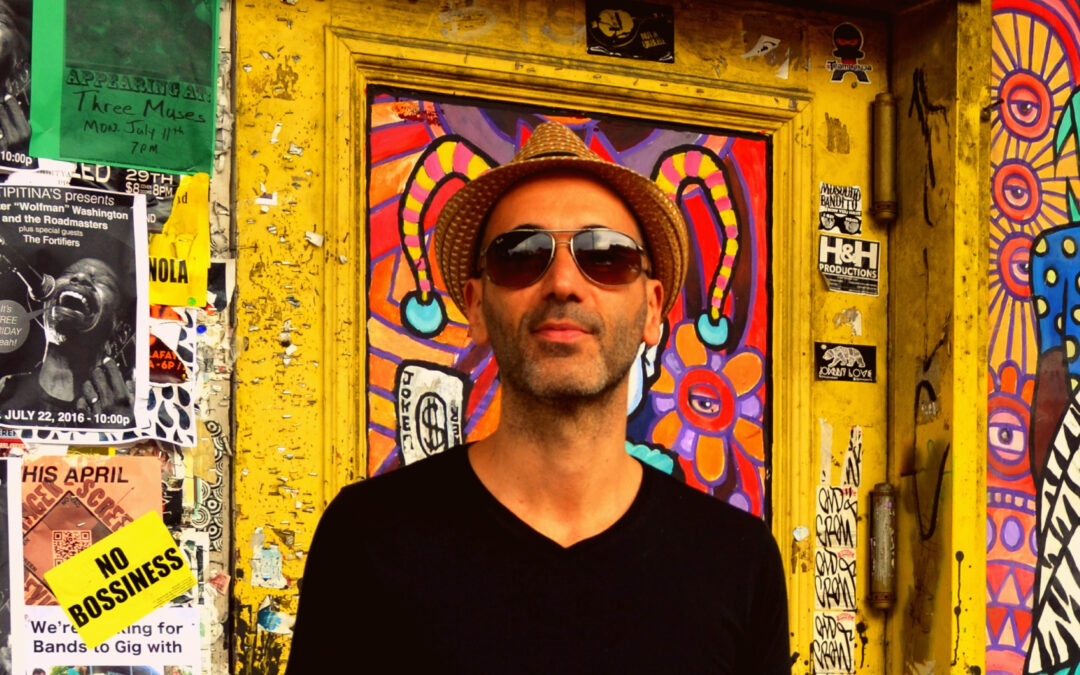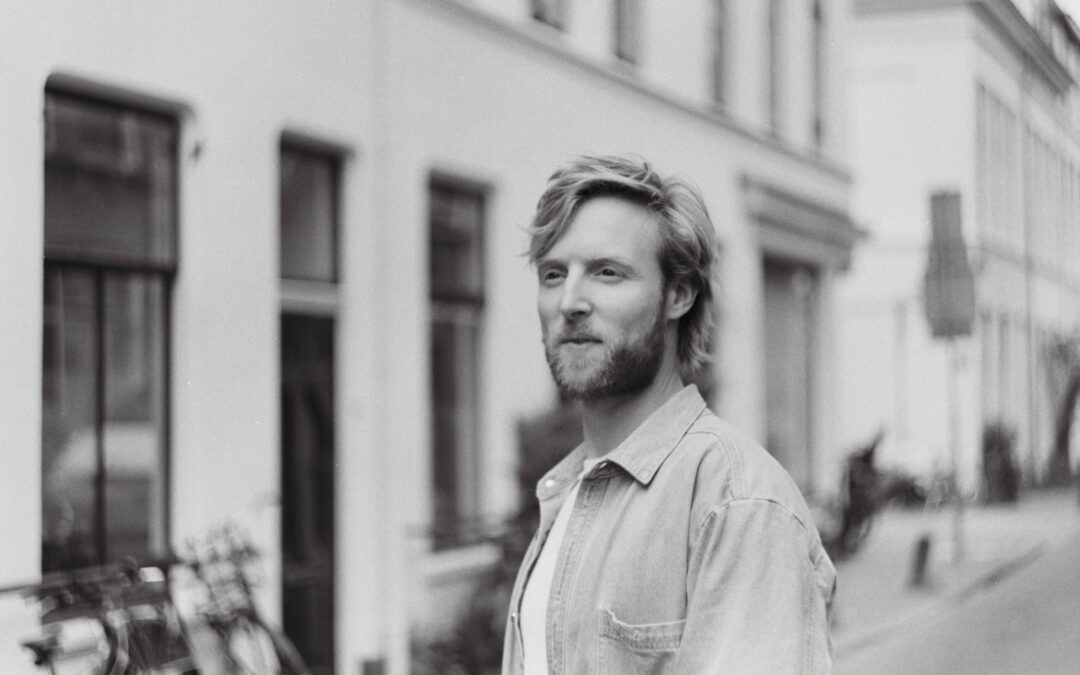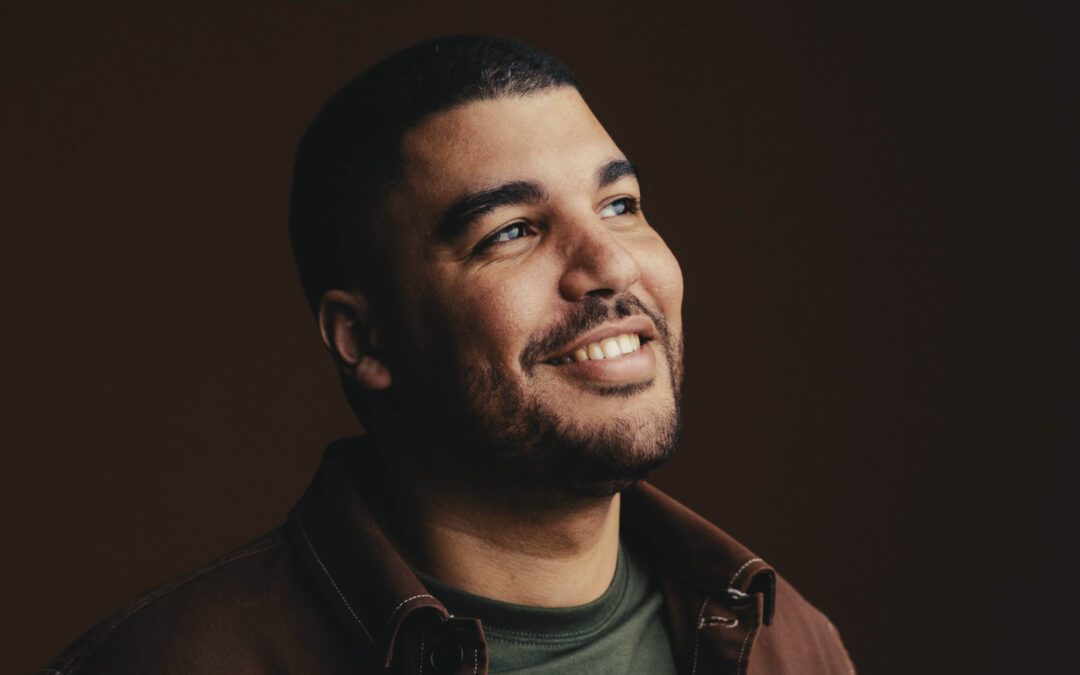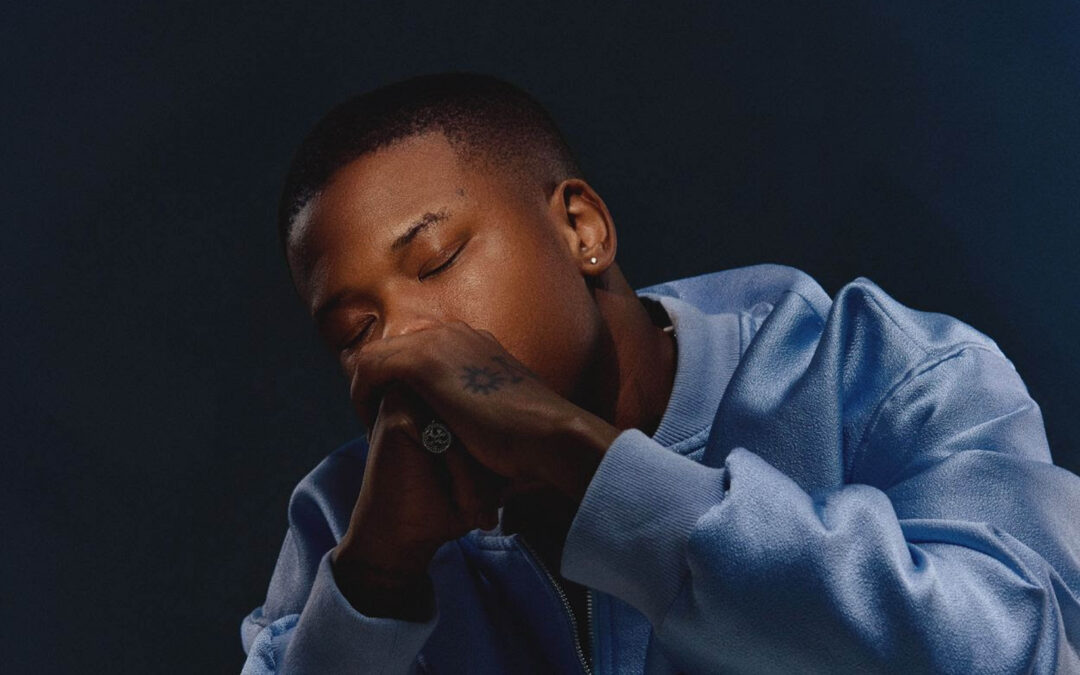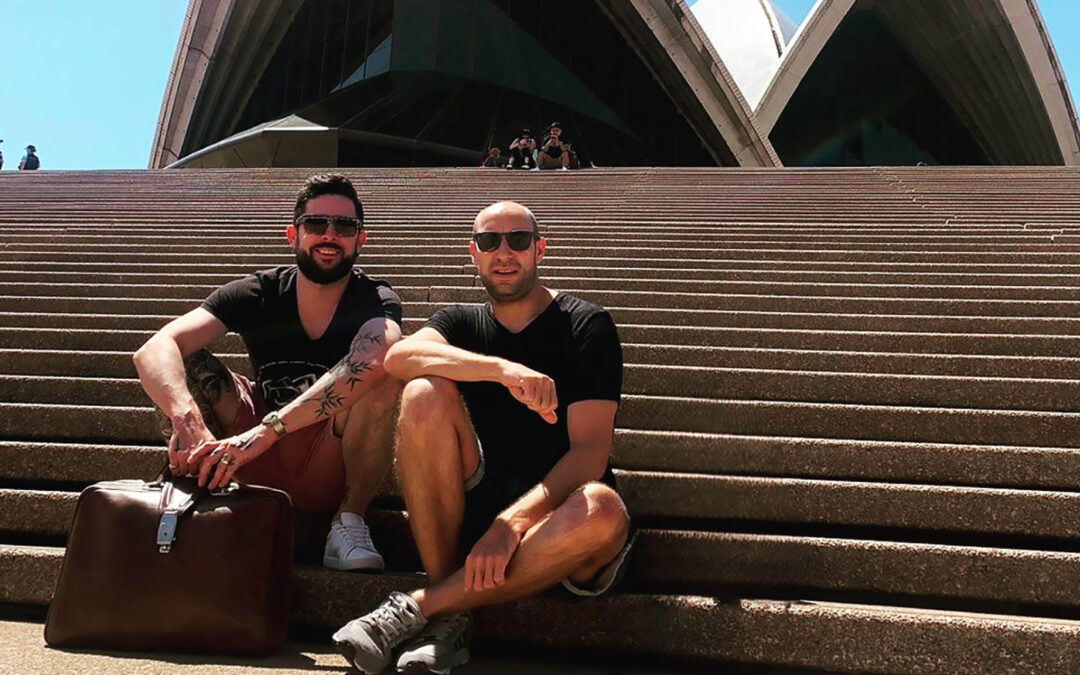From the dawn of chants for freedom across the Mississippi rivers to the liberation toils of umzabalazo (the struggle against apartheid), the ensemble of flutes, drums, saxophones, trumpets, pianos, flugelhorns, cornets, electric organs and the roaring instruments of tonal communication, have ranted and raved across a sprawl of wavelengths – to share the story of collective anguish in all its glory and gore. From the early days of bebop, cool and modal jazz to the later development of jazz fusion, we often find a sacred relationship with our ancestry when we sit in a session of anything between blues and ragtime, free jazz, fusion, hard bop, swing and more.
These varied forms of American jazz made its way into South African shores, more particularly via the bootleg system (according to the “Gallo Vault Sessions” 6 Part Podcast Series) and have since had a profound impact on South African jazz, which has been deeply rooted in the country’s complex history, reflecting a fusion of diverse influences. Emerging in the early 20th century, the genre took shape with the creation of marabi, blending African rhythms, European harmonies and elements of American jazz. The cultural vibrancy of Sophiatown during the 1940s and 1950s became a pivotal moment, fostering the growth of iconic musicians like Hugh Masekela and Abdullah Ibrahim and would later develop icons such as Sipho Hotstix Mabuse, Busi Mhlongo, Mariam Makeba, Sipho Gumede, Thandiswa Mazwai & Simphiwe Dana and more.
29 years into democratic freedom, the pleas of the late Mam’ Busi Mhlongo and Mam Mariam Makeba fall subtly into the church harmonies of Pretoria streets, where we find Rorisang Saul Madiope intricately weaving the sounds of freedom and its never-ending post-apartheid struggle in which we contend with inflation, the search for skilled education, and navigating the work economy in the wake of a pandemic period. Is there one single way to define jazz? Saul doesn’t seem to think so, as he expresses: “Jazz, in my view, should not be confined to a singular definition. The beauty of jazz lies in its boundless possibilities—it can be anything one envisions. Attempting to confine Jazz limits its creative potential. While traditional jazz recordings often involve live performances in auditoriums, I, on the other hand, craft my music digitally on a computer, utilising the many instruments available in the digital realm. The creative process becomes more fluid and dynamic, allowing me to experiment and produce what might take an extended period in a traditional setting in a single session.”

Designed by Best Keamogetswe Ncube @bestjncube

A co-founder of Dream.Believe.Do Records, Madiope’s musical tapestry, as woven in albums like “Ditoro Tsa Kolobe,” “Motherland Jazz”, and “The Crossover II,” reflect the rich hues of Pretoria’s cultural landscape. The consistent thread of opening prayers in his albums, like “Tsela Ya Batsamayi” and “Thando’s Prayer,” unveils the spiritual foundation of his creativity, rooted in the quiet church melodies and traditional sounds of Pretoria. These spiritual echoes, combined with his diverse influences, contribute to the uniqueness of his sonic palette.
“The Crossover Album” with its roster of local and international collaborations, epitomises Madiope’s commitment to transcending musical boundaries. The production value shines through with a seamless fusion of genres, exemplifying the “feels” that guide his creative process. The international acclaim of “Motherland Jazz” on platforms like NY Times Square Billboard and HBO’s “In Treatment” series underscores the production’s prowess, elevating Madiope’s brand recognition and establishing him as a force in the global music landscape.
Beyond the melodies and rhythms, Madiope’s music carries a profound vision—to connect and make listeners feel deeply. The influence of his mother and the homage paid in tracks like “Mama” reveals a deeply personal connection to his craft and the spiritual core of his artistry. As an independent artist and label owner, Madiope envisions impacting the world, not just with his music but by inspiring fellow artists to shoot their shots and break through barriers.
Within the confines of jazz, where notes weave intricate tales and melodies narrate their own tales, Saul Madiope is a testament to the boundless possibilities within the genre. In this interview, we get into the heart of Madiope’s creativity, exploring the nuances of his inspirations, the spiritual underpinnings of his music, the global impact of his independent artistry and more.
Q: With Jazz, it’s sometimes a single instrument; other times, it’s the entire composition ensemble. What about Jazz culture drew you towards the saxophone and made that your instrument of choice?
Saul: It was actually a matter of great coincidence. I was travelling with my mother and daughter by the mall and came across a store with a Saxophone on sale for around R8000. Once I saw that, I felt it was a steal, and once I was paid, I bought it and was inseparable from it. From as young as 12, when I first learned to play the flute in church, I couldn’t read music, but I learned to memorise the harmonies and decided to transfer that skill set to the saxophone. I used YouTube tutorials, and a friend of mine showed me the mouthing of the instrument. It was not a thing where it was premeditated; it was more of a thing that just happened right now, you know?
Q: You are not only well versed in Traditional and Contemporary Jazz but also in Neo Soul, Hip-Hop and R&B. What did you learn to produce first, and what determines your interest in a genre?
Saul: Well, you know, when it comes to my music process, it’s kind of like I’m just riding the vibe. I don’t really have this master plan or anything. I’m all about going with the feeling, letting the inspiration hit me. I’m really into chopping up samples—I love that stuff. It’s like I take these snippets and turn them into keys I can play on my keyboard. It’s a bit like cooking, throwing in ingredients until it tastes just right.
So, the sound is the boss. If it sounds good and hits the right notes, that’s the direction I roll with. I wouldn’t call myself a jazz genius or some opera maestro. It’s more about the feels. I want my music to be soft, you know? Something that really connects and makes you feel a certain way. That’s the sweet spot for me.
When it comes to what I create first, it’s all about the moment. No set plan. Today, I might be all about these chill vibes; tomorrow, it could be a jazzy bass kind of day. It’s like catching a vibe in the moment. That’s where the magic is, in the feeling. If I can feel it, I know someone else might catch those vibes, too. It’s like sharing a piece of the magic.
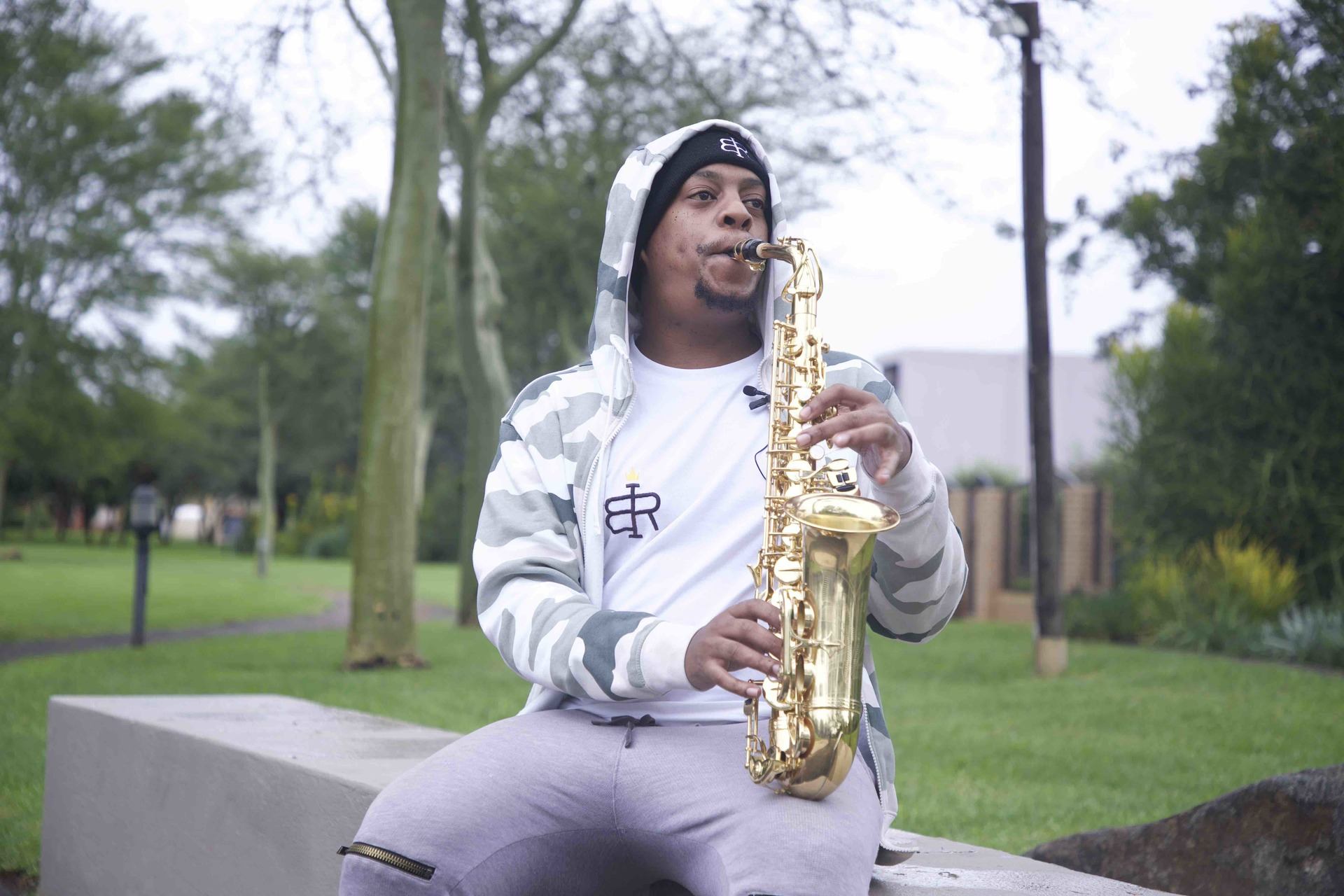
Photographed by Fluorescent Imagery.
Q: From “Kolobe Ya Pitori” to “Sunshine in Pitori”, you are heavily rooted in odes to Pretoria. How influential was the traditional and contemporary landscape of the city to your creative outlook and diverse palette for production?
Saul: Oh, man, Pretoria’s impact on my music is massive. I’m a total patriot. Wherever I go, I want people to know where I’m from because Pretoria is amazing – beautiful and packed with talented, great people. Growing up there really shaped my sound and my ear. It’s like, from my time in church, the vibes were different, you know? It was a quiet church, but they sang a lot, and we had these traditional instruments – trumpets, drums, the whole deal.
Pretoria is unique because you meet so many diverse people. I’ve heard some seriously unique music that others might find weird, but it’s all thanks to the people I’ve met here. From primary school to varsity, the folks around me really shaped my sound. Pretoria is a melting pot of influences, you know? House music is huge here and always has been. That’s why you catch a bit of that in my sound. Jazz, too – the shows at the State Theatre were a big deal, and my dad used to take me. People think Jazz is for old folks, but my dad was like, “Let’s go,” and I ended up falling in love with it. Jazz has this universal appeal that inspires other genres, and I owe that to the shows I caught in Pretoria.
This place has a groove, man, and I try to bring that into my music. It’s also cool to have different roots – my ancestors are from Botswana. When I make music there, it’s a whole different vibe from what I create in Pretoria. Every place has its own energy. When we travel, I always say tap into that energy and let it shape what you create. Pretoria’s energy is huge on me – I carry it wherever I go, and I let people know about this groovy place called Pretoria every chance I get.
Q: From ‘Tsela Ya Batsamayi’ on ‘Motherland Jazz’ to ‘Thando’s Prayer’ on ‘The Crossover II’, there has been a consistency in an opening prayer of sorts to lead the albums. What role does spirituality play in the creative direction of your music?
Saul: Well, it’s all about tuning into the spirit for me. I wouldn’t be able to make music if my spirits were empty. It’s like the core of why I even make music in the first place. It’s crucial to translate or transcend that through the music. Track one, for me, is always a prayer. Opening with a prayer is a nod to how I was raised. Church had a massive influence on me, especially musically. I even learned my first instrument there.
It’s about silencing yourself and listening. Getting that idea that comes from “nowhere” and tapping into it. Beyond culture, it’s like a universal experience of energy. I go with that energy; that’s how I create. I don’t want to lose that because it’s pure. It becomes so pure, and I think that’s what people need in the world. We need to listen to that kind of frequency of music.
Q: My favourite cut on ‘Ditoro Tsa Kolobe’, your first EP, is ‘Mama’ is a fitting ode to every child’s relationship with their parent(s), especially their mothers. What are some of your childhood memories with your mother that inspired the song and your journey as a young father?
Saul: Oh, man, what a beautiful question! You know, one thing that really stands out from my childhood with my mom is the awesome road trips we used to take. Escaping the neighbourhood and driving to places like Durban or PE – those were the days. But hustling makes it harder to keep up with those adventures as you get older. Still, those road trips are some of my fondest memories, bro. I really miss the travels, like, if there’s anything I miss a lot, it’s gotta be the travels.
That track was inspired by thinking about how much my mom has had my back. She thought I was crazy when I said I wanted to do the music thing, but even though she might have been like, “What is this guy saying?” she supported me anyway. When I crafted the track, I reflected on all the times she’s been there for me, you know? It was a gratitude trip for everything she’s done while I was growing up. My parents, both mom and dad, really shaped who I am – there’s no denying that.
And now, being a parent myself, it’s a whole different, beautiful experience. The creative process has a unique flavour to it. I’ve got another track on the same album dedicated to my daughter. She’s a massive inspiration for my music. You’ll surely catch more of that vibe on my upcoming projects. Right now, she’s practically my studio buddy. I’m always in the studio, just trying to immerse her in music. Who knows, maybe one day she’ll pick it up, but the advantage she has that I wish I had is learning instruments from such a young age. So, I’m making sure she gets that opportunity, you know? Whether she uses it or not doesn’t matter. I just want to feel like I passed on that skill because it’s what I know.
Q: Your music ‘Motherland Jazz’ has been featured on the NY Times Square Billboard multiple times, in addition to being playlisted on HBO’s “In Treatment” series and BBC Radio. As an independent artist and label owner, how has this affected your brand recognition and development?
Saul: It’s been a game-changer. You know how it is for indie artists – it’s like having a killer CV for a job application. Without it, you’re just not getting through the door. Initially, it was wild because no one knew who we were. It’s like shouting into the void, you know? But, and this is the crazy part, making music with genuine intent has a way of getting noticed. We snagged a spot on an HBO playlist through Apple Music. Some guy at an agency heard our track on that playlist and hit us up. Talk about a lucky break!
Sure, fate and luck play a role, but once you’re in, you’re in. It did wonders for our brand, giving us this edge. It even came in handy when labels came knocking. I wasn’t eager to sign with just anyone. I wanted to see how far I could take things solo, and I wasn’t about to be someone’s puppet. Luckily, I found a company that gets it, a real partnership, not some toxic mess. But, let’s be real, they wouldn’t have given me the time of day if they hadn’t checked out our track record.
My advice to fellow artists? Shoot your shot everywhere. You never know where it might land. Even interviews like this one add some serious street cred. It’s like, “Hey, we’re rolling with the big dogs.” So, yeah, it’s been a real game-changer for us.
Photographed by Morongwa @mrngw_
Q: A standout element of ‘The Crossover Album’ is the roster of local and international collaborations. How do you feel this quality of collaborations added to the album’s credibility and what it continues to achieve on the global landscape?
Saul: When I first got into production, I was concerned that South African audiences might not connect with my music as much as with other artists. So, my initial approach was to reach out to numerous international artists, taking my chances by sending emails and direct messages. I believed collaborating with artists from different parts of Africa and the world would expand my market and bring in new listeners and fans.
One notable example I considered was the band “BCUC (Bantu Continua Uhuru Consciousness)”, which enjoys global recognition but isn’t as well-known in South Africa. It’s similar to the situation with Muzi, a huge international artist who doesn’t receive the same level of recognition in his own country. I envisioned taking a similar path to gain international recognition and decided to start building networks overseas independently. Unlike some artists with agencies to handle this, I had to manually search for artists on Instagram, send emails, and persistently follow up until something clicked.
What’s interesting about this approach is that you don’t necessarily need to collaborate with super-famous artists or those signed to big labels. Good music exists everywhere, and connecting with artists who resonate with your style can help you reach specific audiences. This approach has been instrumental in building a diverse and widespread fan base, opening up opportunities for international performances.
Q: With future projects, do you plan to leverage this distribution deal to reach new audiences and markets?
Saul: Yes, definitely. In the music space, having alternative sources of income outside the industry can enhance your music career. I view labels as banks that provide loans, and you repay them when it’s time. If you secure a good distribution deal, you can save and make money beyond music. Signing with labels has its perks, like access to networks for tours, but initially, you need them for those connections. As you progress, you develop your own networks, and having financial independence allows you to navigate the industry on your terms when dealing with significant players.
Q: Thank you for joining us for this interview. Before you go, can you tell us more about “Digital Jazzman?” What can we expect from you in the near future? Is there a new project in the works, more visuals, or a tour?
Saul: “Digital Jazzman”, the concept and name, embodies the essence of Jazz as a sophisticated and nuanced sound that defies rigid boundaries. In the world of Jazz, there’s often a tendency to prescribe a specific sound, and those who do not adhere to this predefined notion can sometimes face scrutiny from what I playfully refer to as the “jazz police.” These individuals prefer a more academic interpretation of Jazz, but what I’m advocating for with “Digital Jazzman” is a departure from these limitations.
“Digital Jazzman” is not just a name; it represents a mindset that refuses to be confined by preconceived notions. “Digital Jazzman” seeks to challenge the conventional norms associated with Jazz, especially in the context of how it is created; this album also serves as an introduction to a different facet of my identity, transitioning from my usual focus on exploring my other family totem. The subsequent album, “Motherland Jazz 2”, will delve into the rich stories of my ancestors from this alternate lineage.
The sacred element of one’s relationship with virtually the mother of all music are contained in the liner notes of Jazz albums. To have that parental male figure narrate stories of how they recognise which sessions musicians played which notes, drum kicks, sang which backup vocals in what tone, key, and register is the pride and joy of the tuned footnotes of an aching people. Jazz lies in the history and memorabilia of where we come from and how we use the lessons in these culture-defining moments that inspire a generation of innovators and revolutionaries. Saul Madiope not only makes the soundtrack to an anointed life but also represents a generation on the path to ancestral rediscovery. It is an honour to drown myself in a facet of healing woven into Madiope’s sonic textures.
Written by: King Cedric

